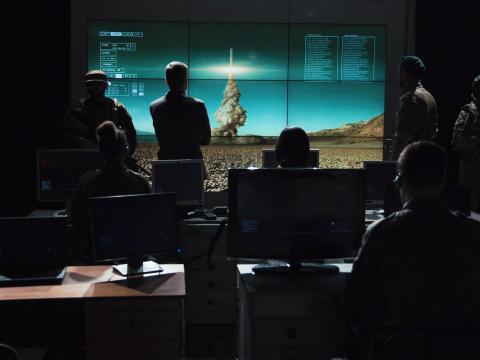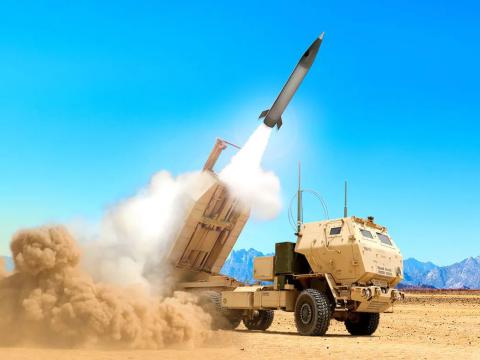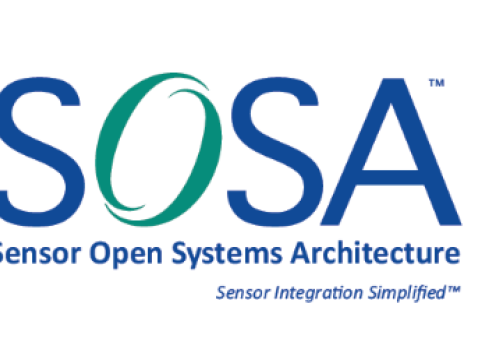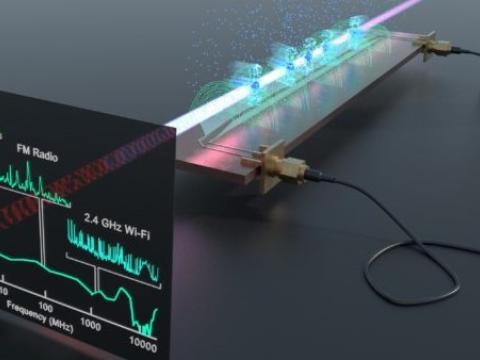Operations Center Combines Connectivity, Versatility
Facility flexibly serves multiple echelons.
The U.S. Marine Corps soon will field a mobile command and control system that will enable its units to employ communications and data systems that are now too large or cumbersome for rapid deployment. The scalable technology allows forces down to the company level to maintain connectivity and reach-back to regional and theater headquarters.
As network-centric warfare becomes a reality, the services are bringing more sophisticated equipment into the field to meet the growing need for rapid data transfer. Agile, highly mobile forces require effective, easily transportable communications infrastructures geared to meet mission requirements. By combining cutting-edge systems with extreme portability, the U.S. military hopes to gain a critical edge over future adversaries.
The Marine Corps Unit Operations Center (UOC) is an example of this ethos. Administered by the U.S. Marine Corps Systems Command, Quantico, Virginia, the effort is aimed at developing mobile command and control facilities to collect, process and disseminate tactical data. According to Scott Miller, business unit manager, General Dynamics Decision Systems, Scottsdale, Arizona, the UOC program began as a means to digitize Marine ground forces. He notes that the Marines wished to follow the U.S. Army’s lead and integrate advanced command and control systems into its lower-echelon units.
The UOC’s core technology originated in a program called the common aviation command and control system (CAC2S), in which General Dynamics and the Raytheon Company participated. However, developers of the UOC emphasized leveraging lessons learned from Army efforts to develop digitized command centers for maneuver forces, Miller observes.
The goal of the UOC is to produce modular, digitized combat operation centers (COCs). These facilities are designed to be highly mobile and not restricted to residing in a traditional command post. As the lead contractor, General Dynamics created a system that allows the Marines to scale the amount of hardware it wants to bring into any given situation. “It affords them the ability to bring in, or not bring in, a high mobility multipurpose wheeled vehicle [HMMWV] with a shelter on it. They can palletize it or hand-carry it onto a CH-53 [helicopter]. And they can bring it in at different periods of time and maintain a basic capability set from the smallest to the largest force size,” Miller says.
Current Marine COCs consist of combinations of nonautomated, nonstandardized equipment whose components cannot interface with each other, are not readily deployable or mobile, and lack modularity. According to Marine Corps Systems Command spokesman Capt. Burrell D. Parmer, USMC, Quantico, Virginia, existing facilities lack the necessary infrastructure—such as power, environmental controls and local area networking for computing—that deployed forces require in a tactical environment. Additionally, existing COCs do not have common logistics support or replacement components that are readily available or cataloged in the defense supply system, he says.
The new COCs will consist of modular systems comprising radios and portable local area networks. The mobile facilities will host, transport and display current and planned battlefield tactical data systems. The technology is designed to allow staff members to share information with each other and subordinates as well as adjacent and higher headquarters staff. Any tactical data system can be viewed from all workstations in the center, Capt. Parmer explains. Networked services such as e-mail, Web access, white boarding, displays and software applications are provided and maintained through the COC’s equipment.
In its most basic element, each center provides a core command and control capability, Miller says. An additional set of ancillary equipment can be included or changed according to the mission. By using this building-block approach, the Marines can provide command and control systems to elements from the division down to company level. The system also entirely consists of commercial or modified commercial products. “There was virtually no development in our approach. The only thing we offered them was some internal research and development that we were going to perform on the intercom system that was really at the core of the program,” he maintains.
The command centers represent a hardware solution that combines various types of software that must function together harmoniously. The system consists of two components: an Ethernet-based backbone supporting voice over Internet protocol (VoIP) for voice communications and tactical data systems built around software packages such as the advanced field artillery tactical data system, command and control for the personal computer, and the Global Command and Control System (GCCS). These components are networked to form a system of systems within a COC, Miller explains. The centers are designed around a flexible architecture that permits modifications based on changes in the existing software environment.
The COCs feature extensive reach-back capabilities. Each system is equipped with satellite communications and standard military radios such as the enhanced position location reporting system and the single channel ground and airborne radio system. Capt. Parmer notes that using VoIP reduces setup time and complex cable arrangement. Because they contain the GCCS application, each center can also access the Global Information Grid. At the division level, the command centers will tie into the nonsecure Internet protocol routing network and the secure Internet protocol routing network. General Dynamics also developed a data-pipe capability that allows lower-echelon units to provide division headquarters with information that can then be sent to commands in the continental United States.
In its initial configurations, the COCs will operate in tents, trailers and transit cases. The system will usually be mounted on an M1102 trailer with its primary backbone modules preconnected. This pre-wiring reduces the time needed to set up the system, allowing a unit to quickly emplace or move the COC, Capt. Parmer says. Unit mobility is enhanced because the system is designed to fit in a transit case or a trailer. A trailer can be dropped at a location, freeing its tow vehicle for other missions. Likewise, the transit cases can be removed from the trailer, he adds.
This flexibility permits the Marine Corps to rapidly deploy and operate existing command and control systems that currently cannot be employed in this manner. Additionally, the system will provide commanders with real-time data and information distribution capabilities, Miller says.
For example, if a small unit of Marines must be inserted to secure an embassy to extract noncombatants, it would bring in a limited set of communications capabilities such as data systems, signals intelligence, satellite communications or imagery applications. This information is then relayed back to a primary command post or command center at sea in near-real time. Miller notes that size and configuration limitations in some existing communications systems hamper their rapid deployment.
Another technology insertion component General Dynamics offered the Marine Corps is the use of high-bandwidth Iridium satellite links. Although the service has not yet decided to use this approach, Miller notes that it is an example of some of the technical innovations that would provide high-bandwidth information flow.
Compared to previous work with the other services, the company developed the COCs from a different perspective. Miller notes that the Marine Corps does not conduct operations in the same manner as the Army or U.S. Air Force. Although the firm has been successful in developing command and control systems for the Army, the challenge was in creating an entirely new design concept. For example, the Army may use two to 30 vehicles to set up a tactical operations center. Because of its operational doctrine, the service has the time and resources to transport these in various vehicles. “The Marines don’t fight like that. They need to come in quickly. They need to come in light, and they need to be able to maneuver rapidly. That created some challenges for us, and that’s why we went away from a HMMWV-sheltered design to a transit case-oriented one with tents and operational trailers that allowed the Corps to scale their needs to the operation,” he says.
The program’s development schedule calls for General Dynamics to provide the Marines with two engineering model development examples in the program’s initial phase. A system demonstration will follow later this year to validate the firm’s approach and the service’s concept. Low-rate initial production will begin in 2003 followed by full production in 2004.




Comments